The first thing we noticed about the Ngorongoro Crater is the cold. Crater Lodge is perched on the top of the rim at a height of 2,200 metres (7,200 feet) and several layers of clothing are required at night. We have log fire blazing away in our (very large) hut that just about keeps the chill away and Debbie immersed herself in the bubbles of our enormous bath to warm up. The immersion takes some considerable time as the full length window in front of the bath affords spectacular views right across the crater floor. In the cold, clear air of the late afternoon we can see the opposite side of the crater, 13 miles away, looking much closer than the distance suggests. But the afternoon sunshine changes into nighttime fog that holds the area in a frozen grasp until the sun battles its way through again during the late morning.
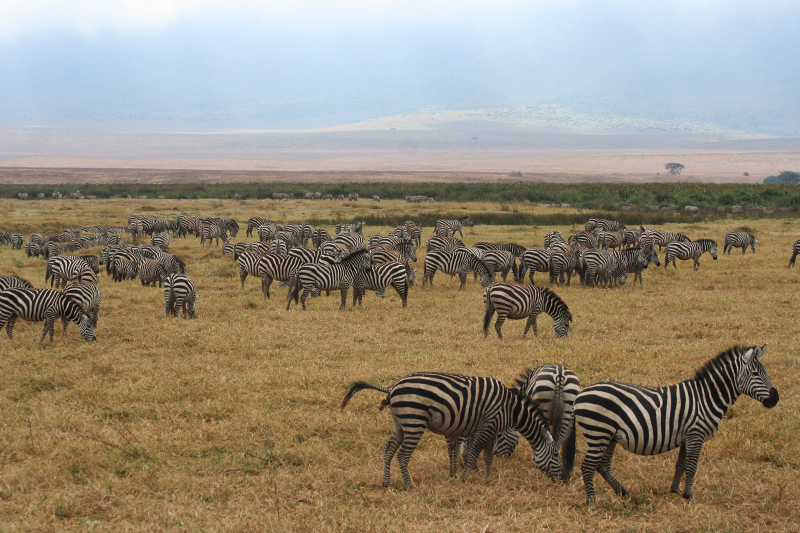 A dazzle of zebra graze outside our window. However, we were told that two months ago four lion took up residence under the floor of hut number 5 frightening to death a valued US visitor. We laughed this off until, one night, I went onto our veranda to hear the grass being ripped everywhere. Switching on the torch, a dozen buffalo became lit up within 10 yards of me. One large female didn’t look too pleased to have her night vision temporarily destroyed by some idiot and let out a loud snort in my general direction. We decided to be escorted to dinner by a security guard.
A dazzle of zebra graze outside our window. However, we were told that two months ago four lion took up residence under the floor of hut number 5 frightening to death a valued US visitor. We laughed this off until, one night, I went onto our veranda to hear the grass being ripped everywhere. Switching on the torch, a dozen buffalo became lit up within 10 yards of me. One large female didn’t look too pleased to have her night vision temporarily destroyed by some idiot and let out a loud snort in my general direction. We decided to be escorted to dinner by a security guard.
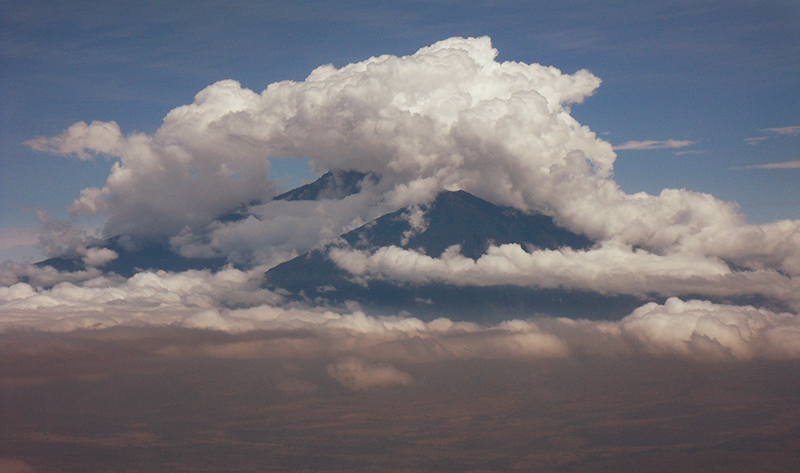 The Ngorongoro Crater was once a gigantic volcano, thought to be taller than Kilimanjaro, but, today, long after its eruption, it is one of the largest calderas (collapsed volcanoes) in the world. Within its walls is an astounding variety of animals and vegetation, including grasslands, swamps, forests, saltpans, a freshwater lake and rich birdlife. Despite the steepness of the crater’s walls, there is considerable movement of animals in and out, thanks to the permanent water and lush grassland on the crater floor. Wildlife shares the crater with 60,000 local Maasai, who have grazing rights, and we often came across them tending their cattle.
The Ngorongoro Crater was once a gigantic volcano, thought to be taller than Kilimanjaro, but, today, long after its eruption, it is one of the largest calderas (collapsed volcanoes) in the world. Within its walls is an astounding variety of animals and vegetation, including grasslands, swamps, forests, saltpans, a freshwater lake and rich birdlife. Despite the steepness of the crater’s walls, there is considerable movement of animals in and out, thanks to the permanent water and lush grassland on the crater floor. Wildlife shares the crater with 60,000 local Maasai, who have grazing rights, and we often came across them tending their cattle.
In fact, some of mankind’s earliest ancestors are known to have lived in the Ngorongoro area, where the rich fossil sites of Olduval Gorge have earned this part of the continent the title of ‘cradle of humankind’. Early hominid fossils dating back 1.7 million years provide some of the earliest of our known ancestors predating Homo Habilis and Homo Erectus remains (about 1 million years) which have also been uncovered in this fascinating area.
The steep crater walls have the advantage of keeping out poachers who covet ivory and rhino horn because the chances of going undetected are minimal. As a result, some of the elephant have enormously long tusks. One particular old chap, the locals call him Babu, has tusks that must be 8 feet long. Or one of them is because the other is shorter. Apparently, it is possible to tell whether an elephant is right or left handed (or tusked) because it will use one tusk more than the other to search for food and the appropriate tusk will become worn or shorter.
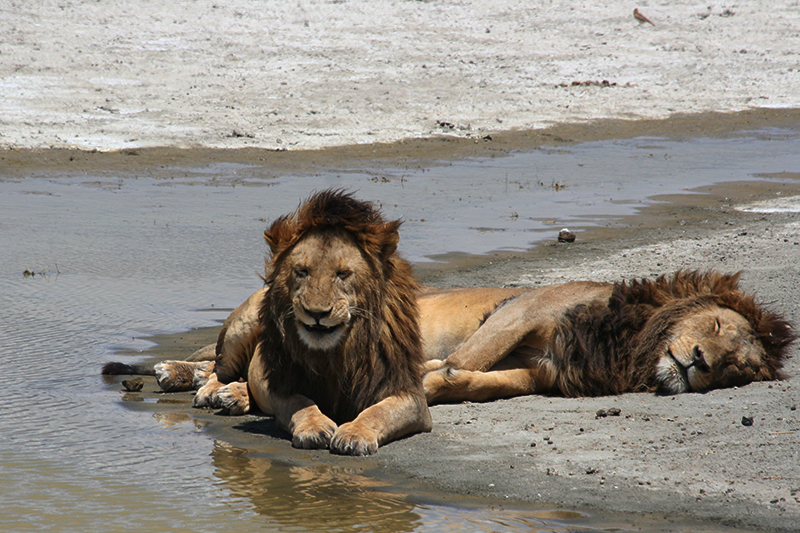 One animal that is unique to the crater is the (male) black-maned lion. We came across three of them sunbathing on the edge of the saltpans fast asleep. They enjoyed lying on their backs, feet to the air, feeling the warmth of the sun on their tummies. They seemed more pussycat than King of Beasts. Having recently eaten a large meal prepared for them by the females of the pride, they were now letting it all digest and would be supine for the next 22 hours. These three were apparently brothers and, although one would be the dominant male, they all lived together sharing the females. It is handy to have a couple of brothers around to share the chores because when a female is on heat, they mate every 20 minutes for up to 7 days!
One animal that is unique to the crater is the (male) black-maned lion. We came across three of them sunbathing on the edge of the saltpans fast asleep. They enjoyed lying on their backs, feet to the air, feeling the warmth of the sun on their tummies. They seemed more pussycat than King of Beasts. Having recently eaten a large meal prepared for them by the females of the pride, they were now letting it all digest and would be supine for the next 22 hours. These three were apparently brothers and, although one would be the dominant male, they all lived together sharing the females. It is handy to have a couple of brothers around to share the chores because when a female is on heat, they mate every 20 minutes for up to 7 days!
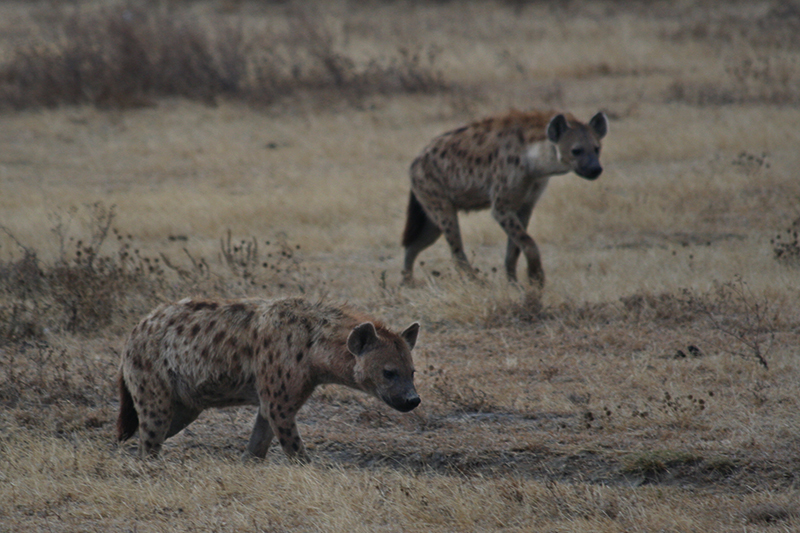 Another interesting variation in the crater is that, we are told, the hyena do most of the stalking and killing. The lazy lion then come along and steal the meal for themselves. This is the opposite of the normal course of events. Little dog-like jackal prowl around also hoping to be uninvited dinner guests but they don’t have the power or the bulk to displace the prime hunters.
Another interesting variation in the crater is that, we are told, the hyena do most of the stalking and killing. The lazy lion then come along and steal the meal for themselves. This is the opposite of the normal course of events. Little dog-like jackal prowl around also hoping to be uninvited dinner guests but they don’t have the power or the bulk to displace the prime hunters.
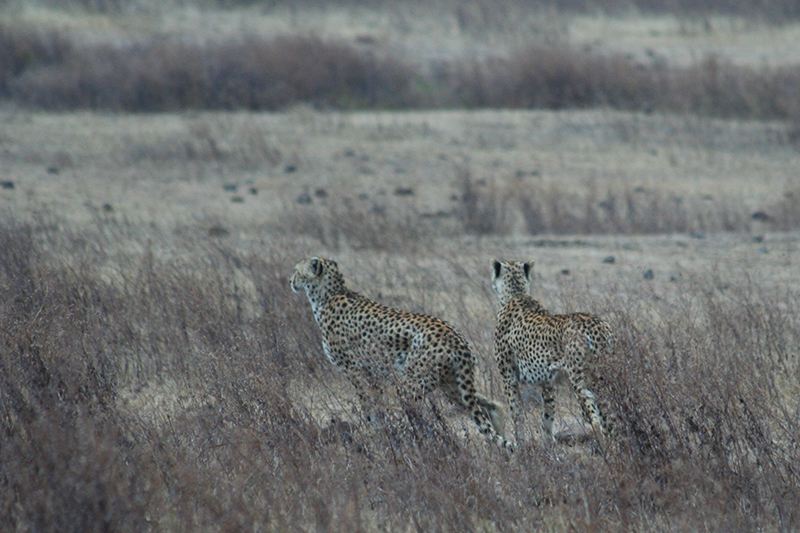 There were two male cheetahs working together, hunting for a meal. These animals glide across the plains in the most athletic and agile manner. They are the fastest of the predators being able to run at 120 kph (75 mph), but, if they want to catch a gazelle who can manage 80 kph (50mph) they still have to get close. In the cold, murky dawn of our second day, these two passed us coming down the crater rim, jogging past either end of our land rover. They then began stalking some gazelle who were wandering around about 100 yards from our vehicle. We began to get excited at the prospect of watching a ‘kill’ as the two cheetah settled down in some long grass downwind of the gazelle. Minutes ticked by without anything happenening until one gazelle began walking toward the cheetah. It passed the two cats close enough to exchange morning pleasantries and continued its stroll unmolested. What a let down! I was all for striding over to the cheetah to give them a sharp kick up their lazy backsides and telling them to start acting like the dangerous predators of their reputation. But the guide said I couldn’t.
There were two male cheetahs working together, hunting for a meal. These animals glide across the plains in the most athletic and agile manner. They are the fastest of the predators being able to run at 120 kph (75 mph), but, if they want to catch a gazelle who can manage 80 kph (50mph) they still have to get close. In the cold, murky dawn of our second day, these two passed us coming down the crater rim, jogging past either end of our land rover. They then began stalking some gazelle who were wandering around about 100 yards from our vehicle. We began to get excited at the prospect of watching a ‘kill’ as the two cheetah settled down in some long grass downwind of the gazelle. Minutes ticked by without anything happenening until one gazelle began walking toward the cheetah. It passed the two cats close enough to exchange morning pleasantries and continued its stroll unmolested. What a let down! I was all for striding over to the cheetah to give them a sharp kick up their lazy backsides and telling them to start acting like the dangerous predators of their reputation. But the guide said I couldn’t.
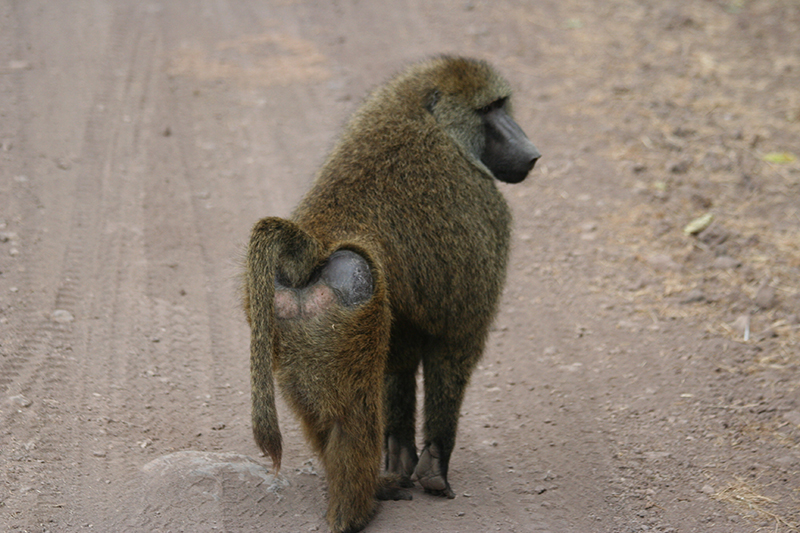 The rest of the trip passed off without huge excitement: a troupe of baboon was busy having breakfast under a large plane tree. Youngsters jostled and played, ragging and tagging one another instead of getting on with the task of eating. Another kept darting in to steal his mother’s food in a typical tiresome teenager fashion. Behind the baboon, quite some distance away, we could make out a black rhino and her youngster bulldozing their way across a circle of lush grassland in the centre of thick woodland. Velvet monkeys hung around stopped vehicles looking for the opportunity to jump inside and steal some tourist food or a pair of sunglasses to impress their mates. Flamingoes and stalks strode elegantly across the salt lake scooping up tiny crustacean and looking for all the world as if they owned the place. Hippos kept out of the sun, immersing their bulk in the fresh water lakes, occasionally surfacing with large snorts as they came up for air. Some hungrier hippo had left the water to find succulent grazing. This is an unusual daytime activity for them as they suffer from sunburn and prefer to graze at night sometimes covering 10 km in search for the best grass.
The rest of the trip passed off without huge excitement: a troupe of baboon was busy having breakfast under a large plane tree. Youngsters jostled and played, ragging and tagging one another instead of getting on with the task of eating. Another kept darting in to steal his mother’s food in a typical tiresome teenager fashion. Behind the baboon, quite some distance away, we could make out a black rhino and her youngster bulldozing their way across a circle of lush grassland in the centre of thick woodland. Velvet monkeys hung around stopped vehicles looking for the opportunity to jump inside and steal some tourist food or a pair of sunglasses to impress their mates. Flamingoes and stalks strode elegantly across the salt lake scooping up tiny crustacean and looking for all the world as if they owned the place. Hippos kept out of the sun, immersing their bulk in the fresh water lakes, occasionally surfacing with large snorts as they came up for air. Some hungrier hippo had left the water to find succulent grazing. This is an unusual daytime activity for them as they suffer from sunburn and prefer to graze at night sometimes covering 10 km in search for the best grass.
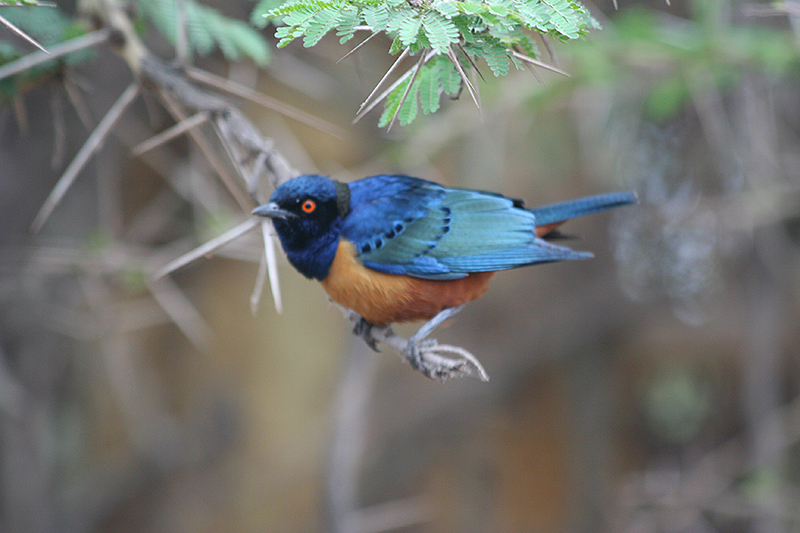 We breakfasted on the banks of a lake full of hippo and soon had to fight off the little finches, weavers and superb starling that had become used to being fed by visitors. I was enjoying a current bun when a kite came from behind my left shoulder and stole it from my hand just as I was about to take a bite. The first thing I knew about it was when I had a face full of feathers. As everyone knows, no one fights harder for the conservation of nature than me, but if I had had my shotgun in my hands, I swear I would have given it both barrels.
We breakfasted on the banks of a lake full of hippo and soon had to fight off the little finches, weavers and superb starling that had become used to being fed by visitors. I was enjoying a current bun when a kite came from behind my left shoulder and stole it from my hand just as I was about to take a bite. The first thing I knew about it was when I had a face full of feathers. As everyone knows, no one fights harder for the conservation of nature than me, but if I had had my shotgun in my hands, I swear I would have given it both barrels.

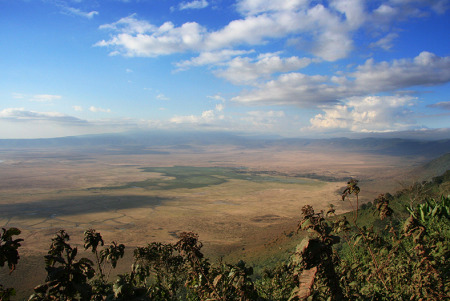
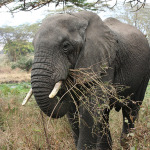
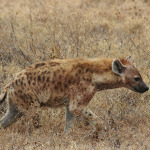
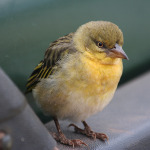
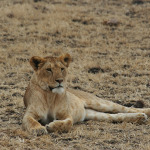
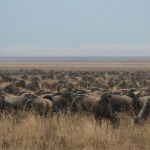
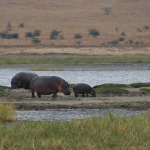
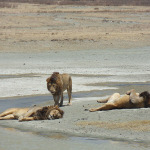
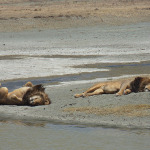
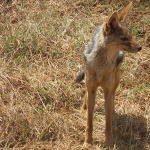
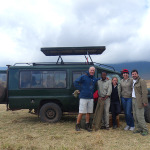
No comments yet.